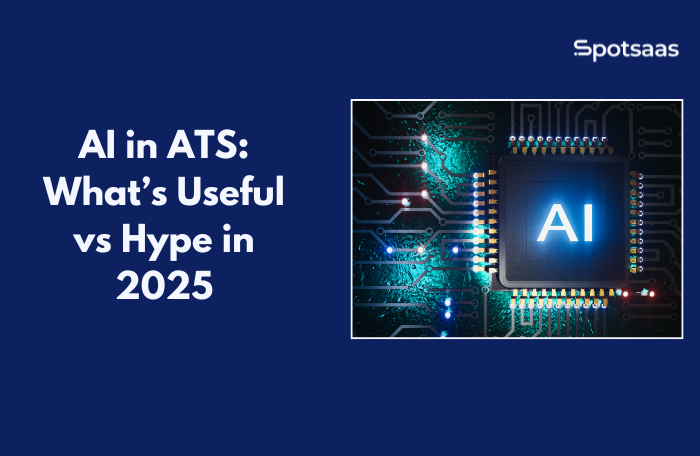Over the past few years, nearly every applicant tracking system (ATS) has started labeling itself as “AI-powered.” While that might sound impressive, not all of these tools offer features that truly make a difference in the hiring process. For decision-makers trying to streamline recruitment, it’s easy to get lost in a sea of buzzwords.
This guide is here to bring clarity. We’re focusing on what’s genuinely useful—features that improve outcomes, save time, or boost team collaboration—and calling out what feels more like marketing than substance.
What This Blog Includes
- A breakdown of what AI really means in modern ATS platforms
- Features that genuinely improve hiring efficiency in 2025
- Common AI claims that don’t deliver practical value
- Key questions to ask ATS vendors before you buy
- Real-world use cases where AI delivers measurable impact
- A comparison of the top 5 AI-powered ATS tools
- Structured FAQs and schema for search visibility
If you’re in the process of choosing a new ATS or evaluating whether the one you’re using is actually using AI to your benefit, this breakdown will help you make a more confident, informed decision.
What ‘AI in ATS’ Really Means
Artificial intelligence is showing up everywhere in recruitment tech, and applicant tracking systems are no exception. But what does “AI-powered ATS” actually mean for the people who use these tools every day?
Here’s a closer look at the most talked-about AI features in ATS software today, and why they’ve become so important for growing teams:
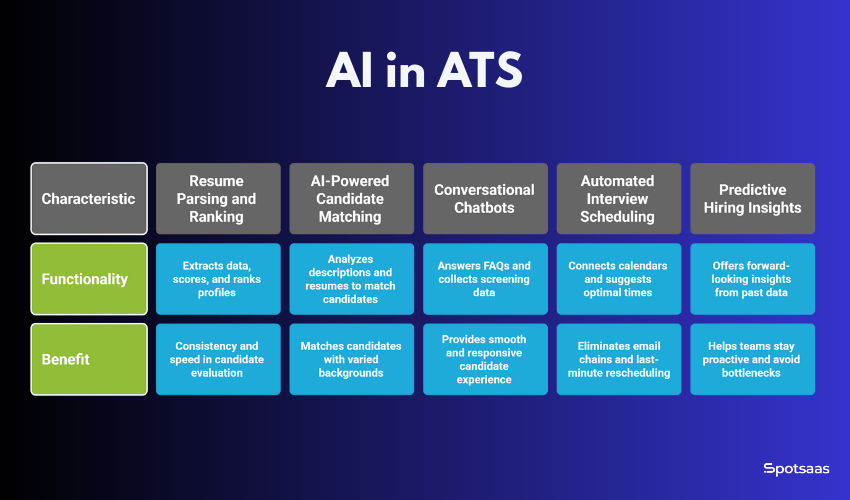
Resume Parsing and Ranking
Gone are the days of scanning resumes line by line. AI-powered parsing tools automatically pull out key data points like work history, education, certifications, and skills. From there, candidate profiles are scored and ranked based on how well they align with your job description.
This isn’t just about speed—it’s about consistency. Everyone is evaluated using the same logic, which helps avoid early-stage bias and surface top candidates faster.
AI-Powered Candidate Matching
Not all qualified candidates use the exact language in your job post. AI matching bridges the gap. These tools analyze job descriptions alongside resumes, portfolios, and sometimes even behavioral data to match the right people, even if their titles or wording are slightly different.
This is especially helpful in roles that don’t follow a traditional career path, like tech, marketing, or startups.
Conversational Chatbots
Recruiters are often swamped with routine questions: “Did you get my resume?” “What’s next?” “When is the interview?” AI-driven chatbots step in as a first layer of communication.
They can answer FAQs, collect basic screening data, and even nudge candidates to complete applications—all while offering a smooth, responsive experience that reflects well on your brand.
Automated Interview Scheduling
Interview coordination is a major time sink. AI-driven scheduling tools connect with hiring team calendars, identify open slots, and even suggest optimal times based on availability.
Some tools allow candidates to choose a time that works for them, removing the need for email chains or last-minute rescheduling.
Predictive Hiring Insights
This is where AI starts to feel like strategy. Predictive analytics taps into past hiring data to offer forward-looking insights. It can estimate how long it will take to fill a role, identify where drop-offs typically happen in your pipeline, or highlight bottlenecks.
These insights help teams stay proactive instead of reactive, especially when hiring at scale.
AI Features That Are Actually Useful in 2025
When evaluating an ATS in 2025, the focus shouldn’t be on how many AI features a tool claims to have, but rather on which of those actually make your hiring process better. Some AI-powered features go beyond surface-level automation and have a measurable impact on recruiter workflows, candidate experience, and overall hiring speed.
| AI Feature | What It Does | Why It Matters |
|---|---|---|
| Candidate Ranking Algorithms | Analyzes resumes and ranks candidates by relevance. | Speeds up shortlisting and improves match accuracy. |
| Predictive Hiring Analytics | Forecasts hiring timelines and identifies drop-off points. | Helps teams plan proactively and optimize funnels. |
| Interview Scheduling Assistants | Automates interview booking and syncs with calendars. | Eliminates back-and-forth and shortens time-to-interview. |
| Smart Resume Parsing | Converts resumes into structured, searchable profiles. | Makes it easier to compare and rediscover candidates. |
| Real-Time Chatbots | Answers FAQs, collects data, and moves candidates forward. | Keeps applicants engaged and reduces recruiter workload. |
Let’s explore the features that consistently deliver value in real-world recruiting environments:
Candidate Ranking Algorithms
These algorithms don’t just skim through resumes—they evaluate candidate data against job requirements to prioritize profiles based on relevance. The system learns from previous hiring decisions, feedback from interview panels, and job performance data (if available).
The outcome? Recruiters start with a smarter shortlist and reduce screening time by up to 50%. This is especially helpful in high-volume hiring or when juggling multiple roles at once.
Predictive Hiring Analytics
Instead of reacting to delays or missed goals, hiring teams can now plan proactively. Predictive analytics uses historical data to answer key questions:
- Which roles tend to take longer to fill?
- Where do most candidates drop off in our pipeline?
- What stage has the highest conversion rate?
These insights support better resource allocation and allow recruiters to adjust strategy before issues arise. It also helps hiring managers understand what timelines are realistic based on actual past performance—not assumptions.
Interview Scheduling Assistants
Manually booking interviews across multiple time zones, availability windows, and panel members can slow everything down. AI-powered scheduling assistants connect directly with calendars, detect common free slots, and allow candidates to self-schedule.
By automating this step, recruiters reduce admin work and move candidates through the process faster—something especially critical in competitive talent markets where delays can cost you top talent.
Smart Resume Parsing
Parsing is no longer just about extracting data from a resume—it’s about structuring it in a way that makes comparison simple and accurate. AI-powered parsers understand nuances in resume formatting, industry-specific terms, and transferable skills.
For example, they can link a project management role in a startup with operations experience in a corporate setting, even if the language used differs. This depth of parsing ensures your database remains clean, searchable, and relevant.
Real-Time Chatbots
Modern chatbots act as digital hiring assistants. They’re available 24/7 to respond to candidate inquiries, gather initial application details, or even provide updates about application status. In some systems, they’re integrated with the ATS workflow, meaning they can move candidates to the next stage after completing a step.
This adds a layer of responsiveness that candidates appreciate while giving recruiters breathing room to focus on more strategic tasks like interviewing and sourcing.
What’s Mostly Buzz (or Not Ready Yet)
While many AI features in today’s applicant tracking systems offer practical advantages, some still fall short of real-world impact. Whether it’s due to limitations in accuracy, transparency, or reliability, a few capabilities sound impressive on paper but aren’t quite delivering the value that hiring teams need.
Here are a few examples of features that are often marketed heavily, but may not be ready to drive meaningful outcomes just yet:
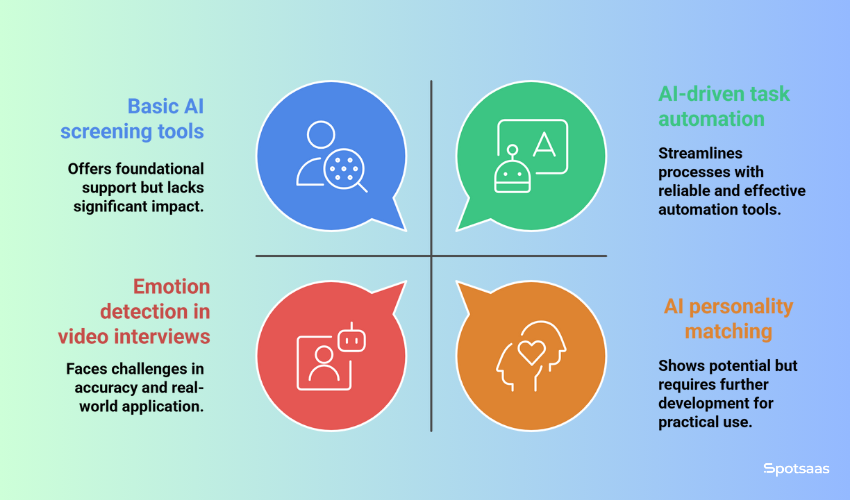
Emotion Detection in Video Interviews
This technology claims to analyze facial expressions, voice tone, or micro-movements to assess a candidate’s personality or honesty during video interviews. While it sounds futuristic, the reality is more complex. These systems often depend on factors like lighting, camera quality, and cultural norms—all of which can affect results.
Many companies remain cautious with this feature, especially when accuracy and fairness are non-negotiable in hiring decisions.
Fully Automated Hiring Decisions
Some platforms promote the idea of end-to-end hiring decisions made entirely by AI, from screening to offer letters. While automation has its place, handing over complete control to algorithms raises concerns. Most organizations still want human judgment in the loop, especially for culture fit, nuanced roles, or leadership hires.
There’s also the question of accountability. Without clear visibility into how decisions are made, explaining or defending them becomes difficult, especially in industries with strong compliance requirements.
AI Personality Matching
Several tools claim to match candidates to roles based on personality data pulled from resumes, emails, or assessments. While the intention is to reduce attrition and improve culture fit, the science behind these models is still evolving.
Right now, these tools are better used as supplementary signals, not as the primary basis for shortlisting or rejecting candidates.
A Note on Trust and Evaluation
Including these examples isn’t about dismissing innovation—it’s about helping teams make informed choices. If a feature sounds revolutionary but doesn’t clearly improve your workflow or results, it’s worth asking more questions.
As AI continues to evolve, some of these capabilities may become more reliable—but for now, most organizations find better ROI by focusing on AI features that simplify high-effort tasks and support better decisions, not replace them entirely.
Questions to Ask ATS Vendors About AI
Choosing an ATS in 2025 is no longer just about feature checklists—it’s about understanding what drives outcomes.
| Question | Why It Matters |
|---|---|
| Is this AI rules-based or machine-learned? | Helps assess whether the system adapts over time or follows fixed logic. |
| Which metrics does the AI improve—and how? | Reveals the real impact on time-to-hire, quality, and recruiter productivity. |
| Can we customize or turn off AI features? | Ensures flexibility to match your hiring style and workflow preferences. |
| Is the AI explainable and compliant with laws? | Important for transparency, fairness, and legal compliance in hiring practices. |
| What support is offered for AI adoption? | Indicates whether the vendor is a long-term partner, not just a software provider. |
To make sure you’re investing in a system that aligns with your team’s goals, ask the questions that go beyond surface-level claims. These aren’t just questions—they’re conversation starters that help uncover how well the platform understands your business, your workflows, and your compliance needs.
Is this AI feature rules-based or adaptive (machine-learned)?
Many systems advertise AI, but what they really offer are rule-based automations. There’s a big difference. A rules-based system follows fixed logic—useful, but not dynamic.
A machine-learned model adapts to new patterns over time, learning from recruiter decisions, successful hires, or feedback loops. Understanding which one powers a feature like candidate ranking or sourcing can help you judge how scalable and responsive the platform really is.
Which metrics are improved by this feature, and how are they measured?
You’re not just buying AI to check a box—you’re investing to move the needle. Ask vendors to explain what kind of impact their AI features have had on specific KPIs. These could include:
- Time-to-fill
- Quality of the shortlist
- Candidate response rate
- Hiring velocity across departments
Ask for dashboards, case studies, or even access to trial analytics if you want to see how it plays out in a real environment.
Can we customize how the AI behaves, or opt out entirely?
Your hiring process is unique. Maybe you prefer to rank candidates based on skill tests, not resumes. Or you rely heavily on internal referrals. A good ATS should let you adapt its AI logic to match your hiring style—or at the very least, allow you to turn off certain features when they’re not helpful.
This flexibility becomes especially important for companies hiring across roles, regions, or functions.
Is your AI explainable, auditable, and legally compliant?
This is a critical question, especially for companies hiring in regions with strict data privacy and fairness laws. Ask vendors to walk you through how their AI makes decisions. Can it explain why one candidate was ranked higher than another? Does it retain logs for audit purposes?
More importantly, does the platform meet the latest guidelines around bias prevention, transparency, and privacy under regulations like GDPR, EEOC, or other regional laws?
Who helps us manage AI adoption and ongoing improvement?
Even if the technology is great, adoption can fall short without the right support. Ask if the vendor offers:
- Role-specific onboarding (for recruiters, hiring managers, admins)
- Guidance on interpreting AI insights
- Help with refining ranking models or chatbot flows
- Dedicated support for compliance and governance questions
Platforms that treat AI as a long-term partnership, not just a product feature, are the ones that create lasting value.
Ask for a live walkthrough of the AI in action.
Ask for a live scenario—such as resume parsing or applicant ranking—to see how quickly and accurately the ATS performs, and how clearly it explains its decisions.
Why These Questions Matter
You don’t need to be a data scientist to evaluate AI in hiring, but you do need to know what to look for. By asking smarter questions, you’ll uncover whether a platform’s AI is truly built to support recruiters or just added for the sake of trend-following.
The goal? Choose a system that feels like a thoughtful assistant, not a black box.
Use Cases Where AI Makes a Real Impact
AI in ATS platforms isn’t about replacing the recruiter—it’s about removing the friction from repetitive tasks, unlocking better data-driven insights, and helping teams hire with greater speed and clarity. Below are some of the most relevant use cases where AI is already making a difference for modern hiring teams.
High-Volume Hiring (Retail, Hospitality, Logistics)
When you’re hiring for roles with high applicant volume, like sales associates, delivery drivers, or warehouse staff, speed and efficiency are critical.
AI supports recruiters by:
- Automatically parsing and scoring resumes based on job criteria
- Flagging repeat applicants or incomplete submissions
- Enabling one-click filters for availability, certifications, or location
This means recruiters can process hundreds of applications in a day without losing quality or momentum.
Remote and Global Talent Pipelines
For companies hiring across borders or operating remotely, AI becomes essential for coordination.
Use cases include:
- Matching candidates to the right roles, even if they’re in different time zones or regions
- Scheduling interviews across distributed teams without manual follow-ups
- Delivering region-specific chat responses and onboarding flows
AI ensures a smooth, consistent candidate experience, regardless of location.
Early Screening for Complex or Technical Roles
In roles like software development, data science, or legal, early screening isn’t just about keywords. It’s about relevance.
AI helps by:
- Surfacing candidates whose resumes show transferable experience
- Analyzing skills, projects, and certifications—not just job titles
- Highlighting patterns that match previous high performers
This is particularly useful when you’re filling roles that evolve quickly or span multiple disciplines.
Structuring Decisions for Fairness and Transparency
AI, when designed and implemented responsibly, supports fairer hiring by introducing consistent, criteria-based evaluations.
For example:
- Every candidate is ranked using the same data points
- Bias-prone signals (like name or school) can be de-emphasized
- Teams can audit how decisions were made and ensure transparency
This is especially valuable for organizations committed to inclusive hiring practices or working under regulatory scrutiny.
Internal Mobility and Redeployment
Some AI-enabled ATS platforms are now helping companies identify talent from within.
Use cases include:
- Recommending internal candidates for open roles based on past performance or growth plans
- Highlighting career paths for current employees using predictive modeling
- Making redeployment decisions in restructuring scenarios is more data-informed
This not only reduces external hiring costs, but it also boosts retention.
Reducing Time-to-Hire in Fast-Paced Environments
Whether you’re a startup scaling quickly or a large team trying to meet seasonal demand, AI can drastically reduce hiring timelines by automating:
- Initial outreach
- Interview coordination
- Status updates and pipeline movement
When speed matters, AI makes keeping candidates engaged and preventing drop-offs easier.
AI isn’t just a nice-to-have in today’s ATS—it’s a practical advantage. For teams managing speed, scale, or complexity, the right AI tools drive faster decisions, stronger matches, and a more consistent hiring experience.
Best AI-Powered ATS Platforms to Explore in 2025
With “AI-powered” now stamped on nearly every ATS product page, it’s become more important than ever to understand how these tools actually use artificial intelligence—and whether those features translate into real hiring value.
Below are five ATS platforms that are doing more than just checking the AI box. These are tools using smart automation, predictive insights, and practical machine learning to simplify hiring at scale.
| Platform | Best For | Key AI Features | Use Case |
|---|---|---|---|
| Ashby | Data-driven hiring teams | Smart scheduling, hiring analytics, dashboards | Data-driven teams needing simple insights |
| Manatal | High-volume recruiting | AI matching, resume scoring, smart filters | High-volume roles in retail or logistics |
| Lever | Relationship-focused sourcing | Talent rediscovery, AI outreach, pipeline tools | Teams focused on nurturing talent pipelines |
| Greenhouse | Structured, scalable workflows | Screening suggestions, reminders, bias support | Hiring teams prioritizing structured workflows |
| Zoho Recruit | Budget-conscious startups & SMBs | Job matching, resume parsing, task automation | SMBs needing AI without high costs |
Ashby – For Data-Driven Hiring Teams
Ashby is particularly popular with growth-stage startups and mid-sized companies that want deep visibility into their hiring funnels.
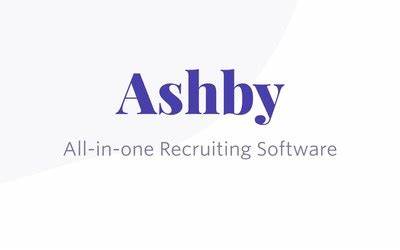
Ashby
- Spot Score – 8
- Best For: High-growth startups and scaling teams seeking AI-powered automation
- Pricing: Starts from $360/month
AI Strengths:
- Smart scheduling assistant that syncs with calendars and reduces no-shows
- Predictive analytics to forecast time-to-hire and identify pipeline bottlenecks
- Performance tracking dashboards that use hiring data to improve strategy
Use Case: Great for lean teams who need reliable insights without building custom reports from scratch.
Manatal – For Fast, High-Volume Hiring
Manatal stands out for companies managing hundreds of applications across multiple roles or locations.

Manatal
- Spot Score: 9.2
- Pricing: Starts at $15/user/month
- Best For: Small to Mid Business
AI Strengths:
- AI candidate scoring based on resume context, skills, and job history
- Suggested candidate-job matches that improve over time
- Smart filtering to surface top talent quickly
Use Case: Ideal for recruitment agencies or HR teams with bulk hiring needs—think retail, call centers, or logistics.
Lever – For Relationship-Driven Recruiting
Lever offers a modern ATS + CRM hybrid with a focus on candidate relationships and pipeline nurturing.
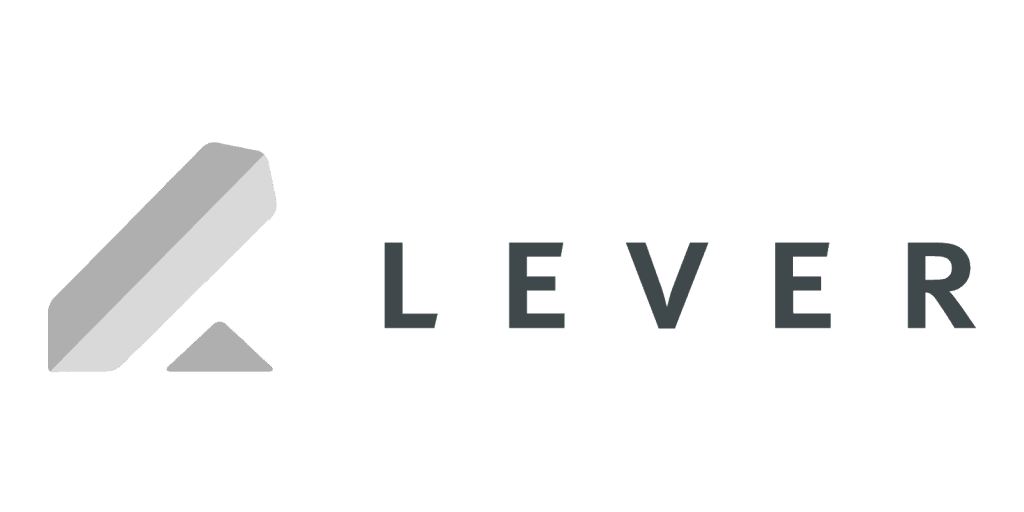
AI Strengths:
- Automatically surfaces high-potential candidates from your database
- Personalized outreach sequences based on past engagement
- Pipeline recommendations for talent rediscovery
Use Case: Perfect for companies with active sourcing strategies or teams focused on long-term talent engagement.
Greenhouse – For Structured, Scalable Workflows
Greenhouse is known for its structured hiring workflows and collaboration tools. Its use of AI is subtle, but meaningful.

AI Strengths:
- Resume parsing and screening suggestions that adapt by role
- Automated candidate reminders and interview prep tools
- Bias-conscious decision support (when paired with structured scorecards)
Use Case: Best for companies where consistency, transparency, and cross-team hiring are key priorities.
Zoho Recruit – For Budget-Conscious Teams That Want AI
Zoho Recruit offers many advanced features of enterprise-level tools, but with pricing that appeals to startups and small businesses.
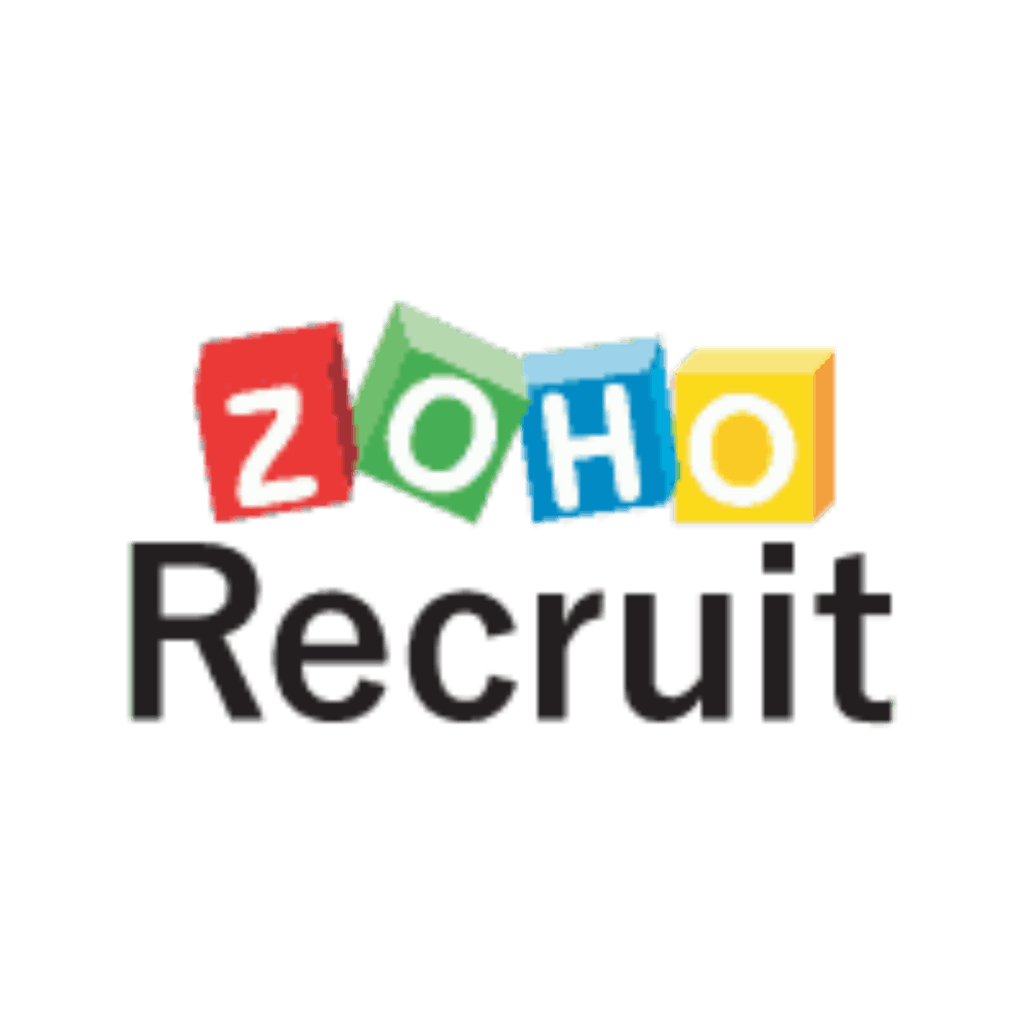
Zoho Recruit
- Platform Supported: Web, iOS, Android
- Pricing: Starts at $25/user/month
- Best For: Small to Mid Business
AI Strengths:
- Smart job-candidate matching
- Resume parsing that structures candidate profiles for quick review
- Automation for repetitive tasks like email follow-ups and stage transitions
Use Case: Ideal for companies that want a capable ATS with built-in intelligence, without paying premium enterprise pricing.
AI works best when it matches your hiring needs. Whether you’re hiring 10 or 1,000, choose a platform that aligns with your workflow—not just the one with the longest feature list.
Conclusion
AI in applicant tracking systems isn’t about chasing trends—it’s about solving real hiring problems with smarter tools. From resume parsing to predictive analytics, the right features can help your team move faster, stay consistent, and make more confident hiring decisions.
But not all AI is created equal. As you evaluate platforms, focus on what aligns with your current challenges and future goals. Ask the hard questions, test features in action, and choose a system that fits how your team works—not one that forces you to adapt.
In 2025, the best ATS isn’t just “AI-powered.” It’s purpose-built, practical, and flexible enough to grow with your hiring needs.
Frequently Asked Questions
What is AI in an ATS?
It refers to features like resume parsing, candidate matching, and automation that streamline hiring workflows.
Can AI in ATS help reduce time-to-hire?
Yes, automating screening, scheduling, and communication speeds up every stage of the process.
Are AI hiring tools compliant with regulations?
Most leading platforms offer compliance-ready features, but it’s important to ask about transparency and auditability.
Do I need technical knowledge to use AI features in an ATS?
No, modern platforms are designed to be user-friendly and require no coding or setup expertise.
Can AI really improve candidate quality?
Yes, when implemented correctly, AI helps prioritize the most relevant candidates based on data, not guesswork.


